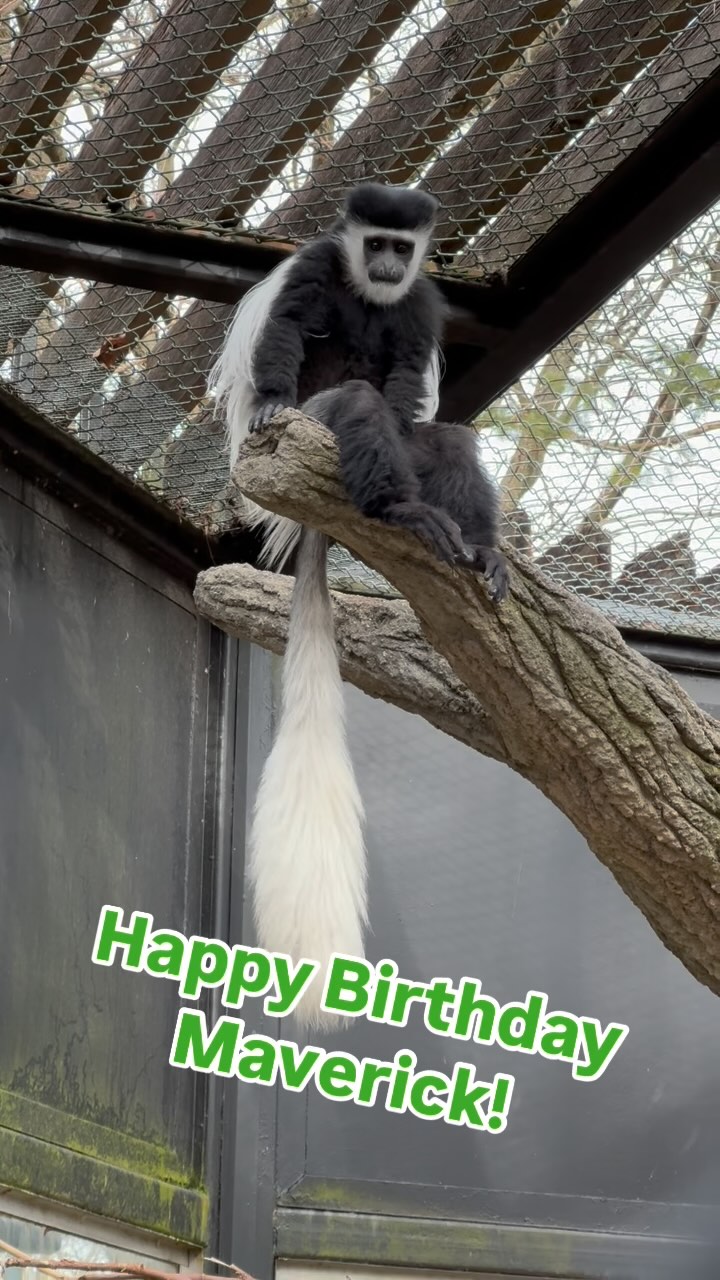- Maverick, a black and white colobus monkey, celebrated his first birthday with playful activities and special treats.
- Colobine monkeys, like Maverick, possess unique anatomical features, including the absence of fully developed thumbs.
- The diet and social behavior of colobines are influenced by their specialized digestive systems and leaf-based diets.
- Conservation efforts for colobines are critical due to the challenges posed by habitat destruction and climate change.
- Zoo management techniques contribute significantly to the preservation and education around species like the black and white colobus.
Maverick, the black and white colobus monkey, recently marked his first birthday with a mixture of playful antics, social interactions with his troop, and a few much-deserved naps. This milestone for Maverick was not merely a day of fun but an opportunity to highlight the intriguing life and characteristics of the colobine family, to which he belongs, bringing attention to both their anatomical uniqueness and conservation needs.
Colobine monkeys, such as Maverick, stand out among primates for one fascinating anatomical detail: the lack of a fully developed thumb. This peculiarity draws interest from scientists and nature enthusiasts alike. Most primates rely on opposable thumbs for grasping and manipulating objects—a necessity for those with diverse diets. However, colobines have adapted to a purely folivorous diet, consuming a variety of leaves and young shoots that do not require such dexterity. This adaptation likely influenced their hand structure over evolutionary periods. Research suggests that their streamlined hand design enhances their efficiency in traveling through the forest canopy without the encumbrance of a bulky thumb getting in the way.
Maverick’s life in captivity echoes the vital aspect of social interaction intrinsic to colobines. In their natural habitats, these monkeys exhibit complex social structures, often living in troops. The fierce play-fighting Maverick engaged in with his troopmates mirrors behaviors observed in the wild, which serve essential roles in strengthening social bonds and maintaining troop hierarchy. Play is not merely for amusement; it is crucial for young monkeys to develop motor skills and learn social cues. This rich tapestry of social behavior within colobines underscores the intricate balance of cooperation and competition that governs their group dynamics.
One of the most distinct features of the colobine diet is their reliance on leaves—an aspect that has led them to develop specialized digestive systems. Equipped with complex stomachs similar to ruminants such as cows, these primates can break down tough plant material efficiently. The digestion process involves microbial fermentation in the foregut, allowing them to extract necessary nutrients from leaves seldom utilized by other animals. This dietary specialization is a double-edged sword, offering both advantage in terms of food abundance and evolutionary pressure when habitats are altered or destroyed.
Environmental changes and human activities have placed considerable pressure on colobine populations. Deforestation and habitat fragmentation remain the most pressing threats to their survival, as these factors drastically reduce the availability of food and shelter. Conservation organizations are working tirelessly to mitigate these threats by establishing protected areas and promoting sustainable land use practices. Understanding the ecological needs of species like the black and white colobus is essential for effective conservation efforts. Effective habitat preservation not only protects these monkeys but also the myriad other species that share their environment.
Zoo management has become a vital component in the ex-situ conservation of species like Maverick. Modern zoos are more than just places for public viewing; they are centers for education, research, and species preservation. By maintaining genetically diverse populations within controlled environments, these institutions can serve as a genetic reservoir for future reintroduction programs. Furthermore, the educational role of zoos is crucial in raising public awareness about the challenges facing wildlife and the importance of biodiversity. Programs centered on species like the black and white colobus offer visitors a tangible connection to the natural world, fostering a deeper understanding of these animals’ roles in their ecosystems.
Celebrating Maverick’s birthday is emblematic of a larger narrative about the necessity of balancing human interests with the preservation of wildlife. The insights gained from studying and caring for colobines in captivity provide a valuable perspective on their biology and the ecological pressures they face. This knowledge is essential for crafting effective policies and practices that can safeguard their future in the wild. By emphasizing the importance of habitat conservation, sustainable resource use, and public education, we can work towards a harmonious coexistence with wildlife, ensuring that species like Maverick’s continue to thrive for generations to come.
*****
Source Description
It was this silly monkey’s first birthday this week! Maverick, the black and white colobus, celebrated with some monkey hijinks, special treats, play fighting with one of his troop, and taking a little nap. A pretty good time!
Fun fact about colobines! They don’t have a thumb! Not a fully developed one like most primates, at least. Scientists aren’t 100% sure why, but it might be because they only eat leaves and don’t require the same dexterity as primates with a more varied diet.


